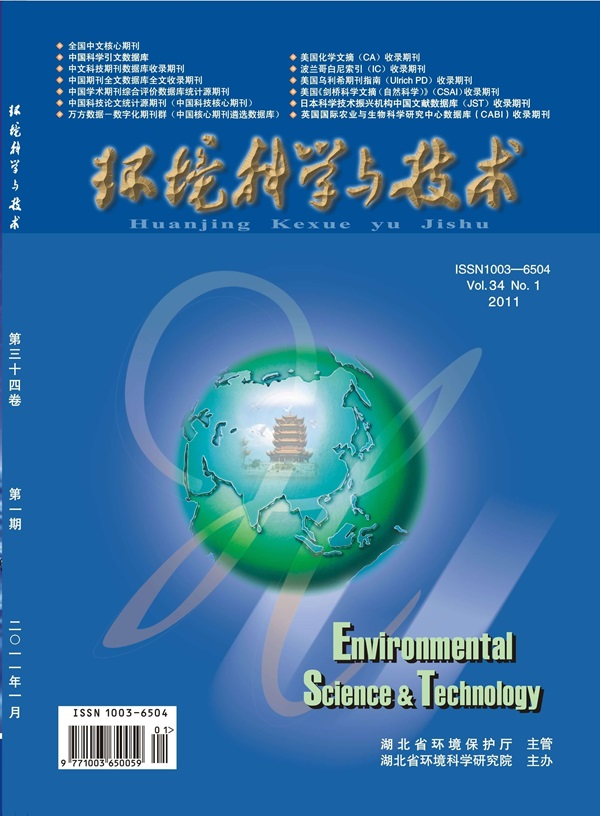打破碳氟堡垒:全氟磺酸的还原性除氟。
IF 10.8
1区 环境科学与生态学
Q1 ENGINEERING, ENVIRONMENTAL
引用次数: 0
摘要
全氟/多氟烷基物质(PFASs)以其超稳定的C-F键和普遍的环境持久性为特征,由于其顽固性和生物蓄积性,给修复带来了严峻的挑战。传统的氧化降解方法主要产生生物蓄积性短链氟化衍生物,无法实现分子湮灭。我们强调还原性除氟是一种通过两种不同的电子转移方式直接切割C-F键和减轻毒性的变革策略:由反应物质介导的间接途径(例如水合电子/活性氢)与利用生物催化或电化学系统进行靶向电子注射的直接机制形成对比。机理分类和定量结构-反应性分析表明,除氟效率受分子结构(如链长和氟化模式)和操作参数(如pH、氧化还原电位和溶液基质)的支配。虽然独立的还原技术面临能源强度和二次污染风险的可扩展性限制,但生物修复-电化学-光催化系统的协同集成显示出更高的除氟效率。通过将分子水平降解机制与模块化工程相结合,我们提出了开发还原性除氟的未来方向,为消除环境顽抗和遵守不断变化的全球水质要求提供了一条可持续的途径。本文章由计算机程序翻译,如有差异,请以英文原文为准。
Breaking the Carbon-Fluorine Stronghold: Reductive Defluorination of PFASs.
Per/polyfluoroalkyl substances (PFASs), characterized by their ultrastable C-F bonds and pervasive environmental persistence, present critical remediation challenges due to their recalcitrance and bioaccumulative potential. Conventional oxidative degradation methods predominantly yield bioaccumulative short-chain fluorinated derivatives, failing to achieve molecular annihilation. We highlight reductive defluorination as a transformative strategy to directly cleave C-F bonds and mitigate toxicity through two distinct electron-transfer modalities: indirect routes mediated by reactive species (e.g., hydrated electrons/active hydrogen) contrasted with direct mechanisms employing biocatalytic or electrochemical systems for targeted electron injection. Mechanistic taxonomy and quantitative structure-reactivity analyses reveal that defluorination efficiency is governed by the molecular architecture (e.g., chain length and fluorination patterns) and operational parameters (e.g., pH, redox potentials, and solution matrices). While standalone reductive technologies face scalability constraints from energy intensity and secondary contamination risks, synergistic integration of bioremediation-electrochemical-photocatalytic systems demonstrates enhanced defluorination efficiency. By coupling molecular-level degradation mechanisms with modular engineering, we propose future directions for developing reductive defluorination, offering a sustainable pathway to eliminate environmental recalcitrance and comply with evolving global water quality mandates.
求助全文
通过发布文献求助,成功后即可免费获取论文全文。
去求助
来源期刊

环境科学与技术
环境科学-工程:环境
CiteScore
17.50
自引率
9.60%
发文量
12359
审稿时长
2.8 months
期刊介绍:
Environmental Science & Technology (ES&T) is a co-sponsored academic and technical magazine by the Hubei Provincial Environmental Protection Bureau and the Hubei Provincial Academy of Environmental Sciences.
Environmental Science & Technology (ES&T) holds the status of Chinese core journals, scientific papers source journals of China, Chinese Science Citation Database source journals, and Chinese Academic Journal Comprehensive Evaluation Database source journals. This publication focuses on the academic field of environmental protection, featuring articles related to environmental protection and technical advancements.
 求助内容:
求助内容: 应助结果提醒方式:
应助结果提醒方式:


